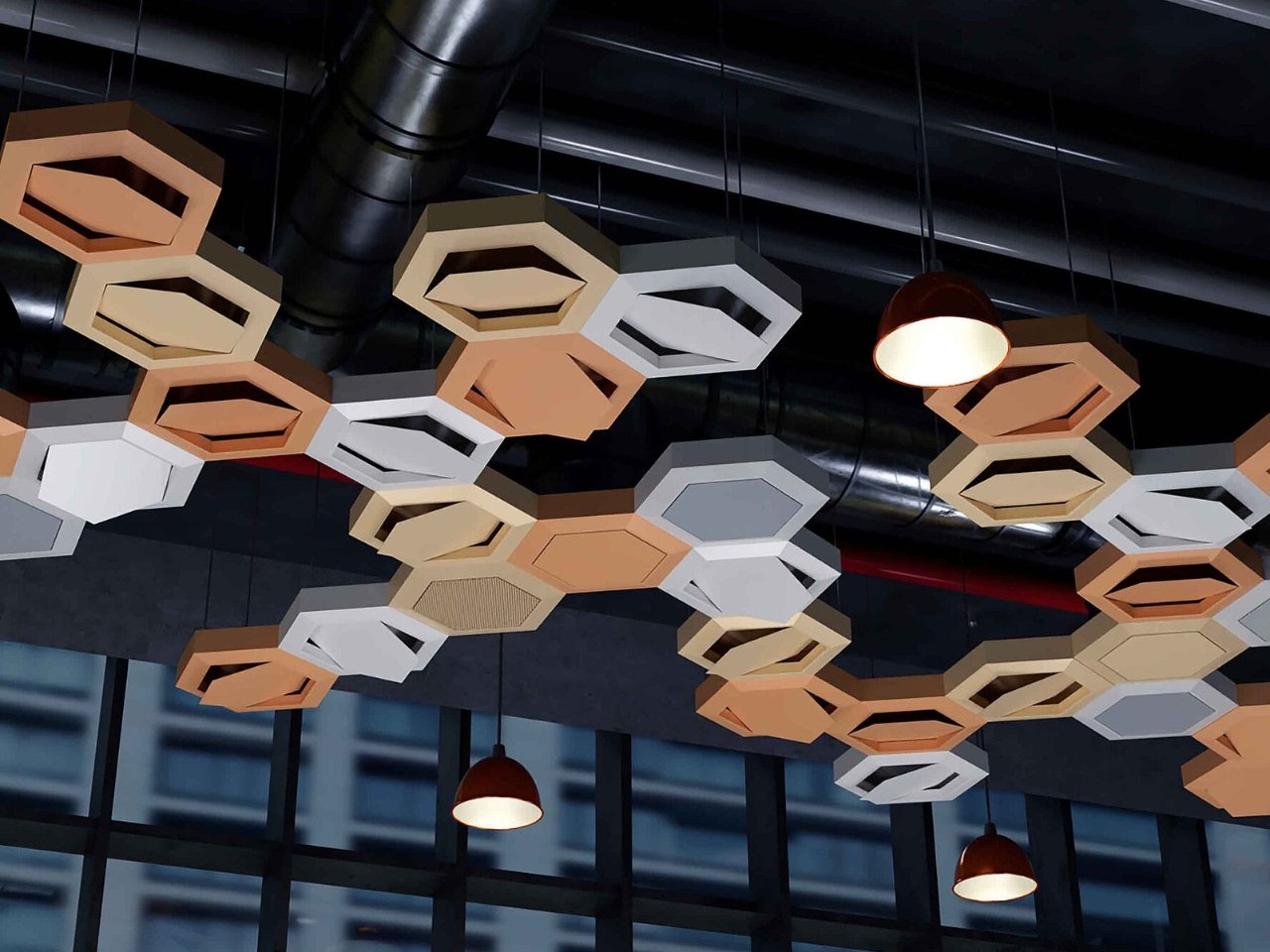Imagine looking up at your office ceiling and seeing something completely unexpected. Instead of the usual industrial air conditioning vents that scream “utility,” you notice an elegant pattern of hexagonal tiles that could double as modern art. That’s the vision behind AirHive, a groundbreaking design concept that recently earned recognition at the prestigious Red Dot Design Concept 2025 awards.
Created by a talented team of seven designers (Luis Reyes, Yiman Yuan, Ravi Anand, Liu Yang, Wan Kee Lee, Miguel Kuri, and Hang Yu), AirHive completely reimagines how we think about HVAC systems in commercial spaces. Rather than treating heating, ventilation, and air conditioning as one bulky, single-purpose machine that sits dormant when not actively cooling or heating, this innovative system breaks everything down into smart, modular components that work together like a well-coordinated team.
Designers: Luis Reyes, Yiman Yuan, Ravi Anand, Liu Yang, Wan Kee Lee, Miguel Kuri, Hang Yu
Here’s where it gets really interesting. Each hexagonal tile serves a specific purpose. Some tiles handle cooling or heating, others focus on ventilation, some purify the air, and certain tiles contain sensors that constantly monitor your indoor air quality. Think of it like having a dedicated specialist for every aspect of your building’s air management, all working in harmony.
The beauty of this modular approach goes beyond just looking sleek. A central smart system acts as the conductor of this ceiling orchestra, continuously monitoring your building’s conditions and telling each tile exactly what to do. Need more cooling in the conference room during that packed afternoon meeting? The system adapts. Want fresher air near the windows? Done. It’s responsive, intelligent, and tailored to your actual needs rather than operating on a one-size-fits-all approach.
Lead designer Luis Reyes highlights one of the system’s most practical advantages: flexibility. “Not only does it bring aesthetics and modularity, but the ‘airHive’ system is also extremely flexible, as it can be expanded to more rooms over time or change configuration,” he explains. This means if your office grows or you decide to reconfigure your space, your air conditioning system can grow and adapt with you. No need for expensive, disruptive renovations or complete system overhauls.
For office buildings and commercial spaces where air quality directly impacts employee productivity, comfort, and even health, AirHive addresses a critical need. Poor air quality has been linked to everything from decreased concentration to increased sick days, making this more than just a design conversation. It’s about creating environments where people can actually thrive. What makes this design particularly forward-thinking is how it transforms HVAC from an eyesore you try to hide into an architectural element you might actually want to showcase. The hexagonal pattern can create sculptural ceiling designs that enhance rather than detract from your interior aesthetic. It’s functional design at its finest, proving that practical doesn’t have to mean boring.
AirHive represents a shift in how we approach building systems. Instead of bolting function onto design as an afterthought, it integrates both from the ground up (or ceiling down, in this case). And in our increasingly eco-conscious world where building efficiency matters more than ever, having a system that adapts precisely to current needs rather than running at full blast could mean significant energy savings. While AirHive is still in the concept phase, its Red Dot recognition signals that the design world is ready for HVAC systems that do more than just move air around. They should enhance our spaces, adapt to our needs, and maybe even look good doing it.
The post This Hexagonal Ceiling Tile System Rethinks Office Air first appeared on Yanko Design.

